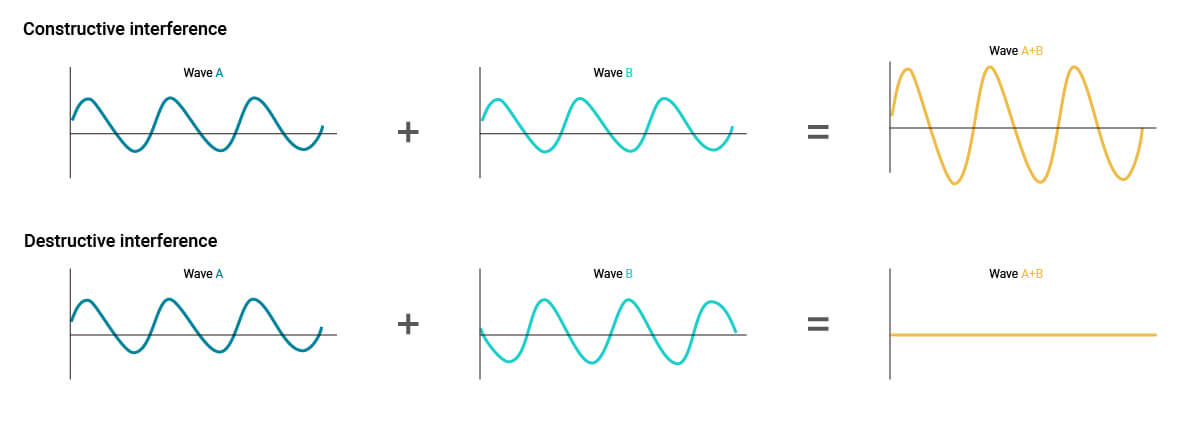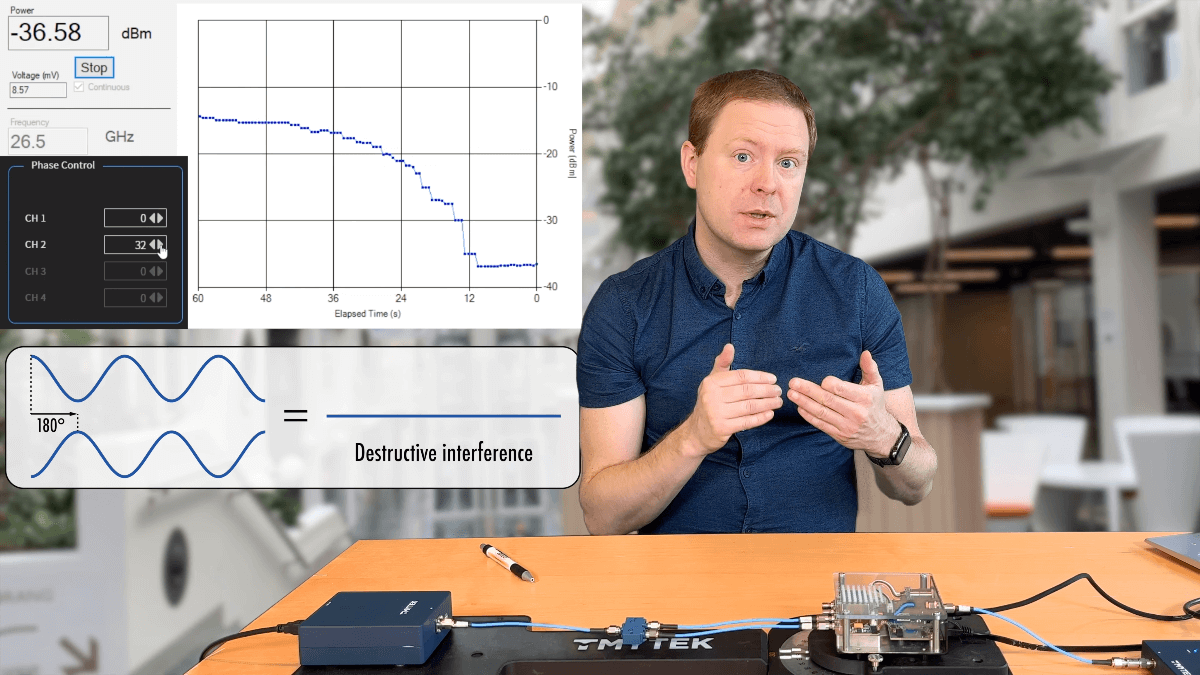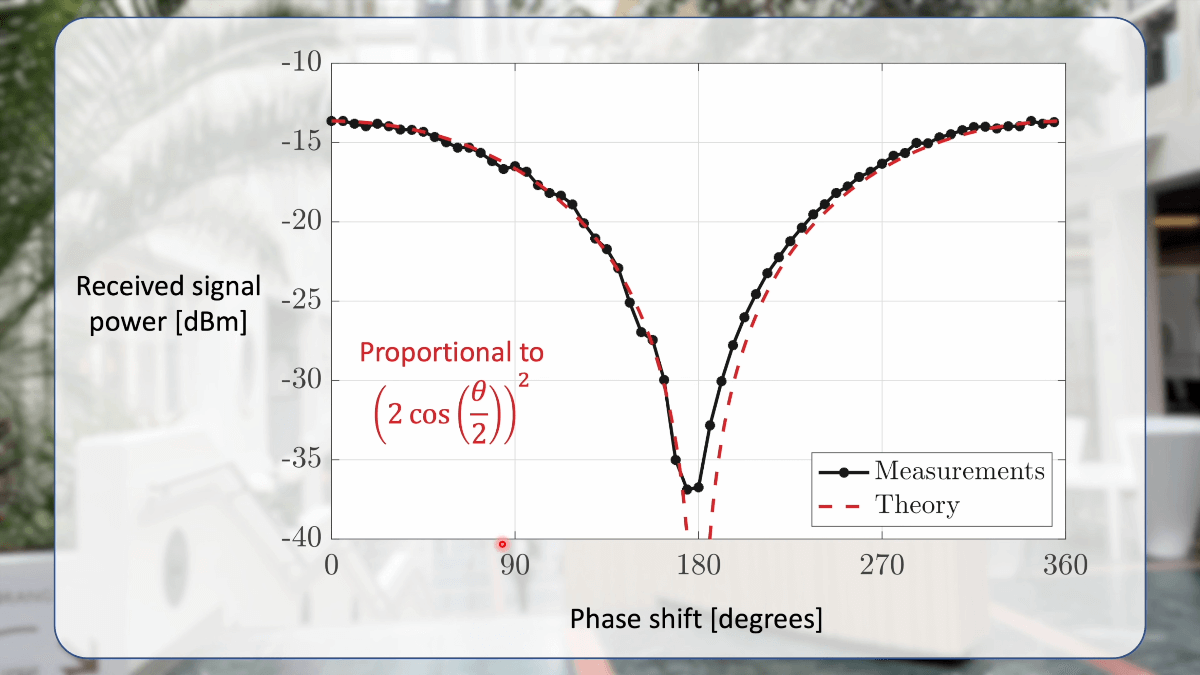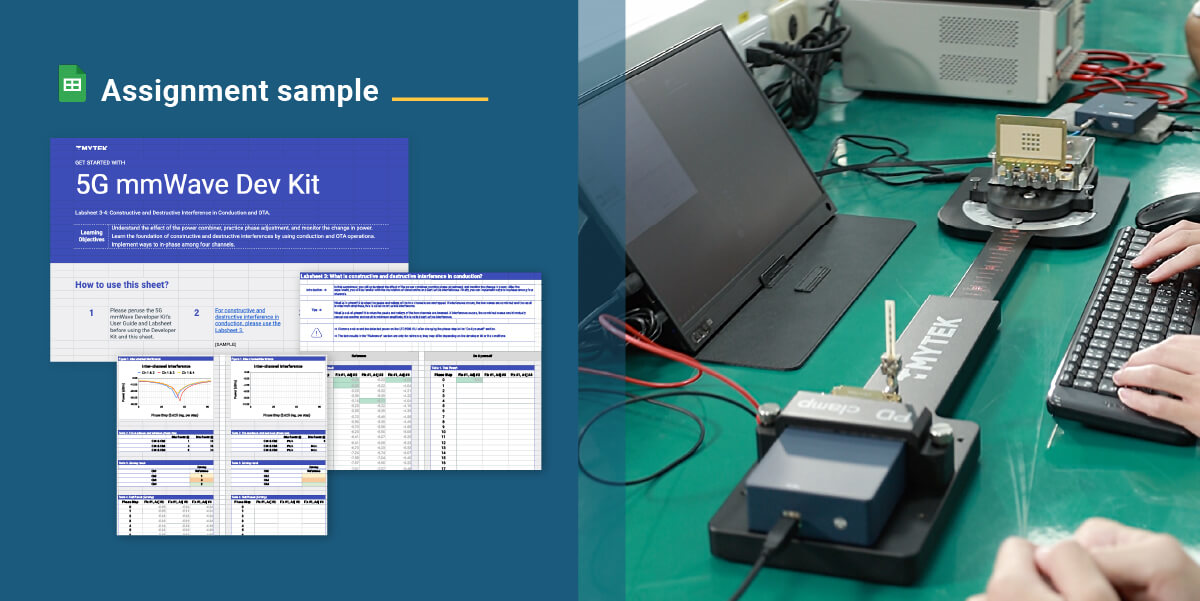Delve into Constructive and Destructive Interference Fundamentals with Prof. Emil Björnson's Insightful Video Series

Introduction:
In the previous blog post of Prof. Björnson's Dev Kit experiment, we delved into the world of wave propagation in millimeter wave (mmWave) communications, the behavior of signal strength with distance and the impact of various objects on signal penetration. In this blog post, we now turn our attention to another critical aspect of mmWavetechnology: constructive and destructive interference. By harnessing constructive interference, we can optimize the distance and direction limitations inherent in 5G communications, ushering in a new era of connectivity.
➭ Visit the previous blog post here: Understanding Wireless Propagation in 5G mmWave Communications.
Understanding Constructive and Destructive Interference
At its core, constructive interference occurs when two or more waves align perfectly, enhancing their amplitude and power. On the flip side, destructive interference arises when waves are out of sync, causing them to diminish each other's strength. To comprehend these phenomena, let's delve into the physics behind them. When two waves meet, they combine according to trigonometric identities. This mathematical wizardry results in the summation of waveforms, ultimately determining whether they constructively reinforce or destructively cancel each other.
Understanding constructive and destructive interference is crucial, especially in the world of millimeter wave communication. Millimeter waves, with their shorter wavelengths, are prone to degradation over long distances. Harnessing these interference principles can help us overcome these challenges and optimize 5G communications. Through constructive and destructive interference of electromagnetic waves, we can generate a stronger signal in a certain direction. By adjusting the phases of each element in an array antenna, we can fine-tune the beamforming strength and direction of millimeter wave signals, opening up more possibilities in wireless communication such as tracking, targeting, and object finding.
 Image 1: What is constructive/ destructive interference?
Image 1: What is constructive/ destructive interference?
Video Experiment
In the third video of this series, Prof. Björnson takes us on an experimental journey to demonstrate constructive and destructive interference. Using a 26.5 GHz signal, he explores how phase shifts affect the power of the superposition of two signals during transmission and reception. Through captivating experiments with two channels of a beamformer, he reveals the intricate dance of radio waves as they reinforce or cancel each other.
Setting up the Experiment
Prof. Björnson sets the stage with a detailed explanation of the experimental setup, emphasizing the importance of phase shifts in interference phenomena.
 Image 2: Experimental setup. Phase shifting could occur when the signal from the 26.5 GHz signal generator passes through the beamformer. The signal from the two channels of the beamformer travels via two RF cables, passes through a combiner, and is then received by the power detector.
Image 2: Experimental setup. Phase shifting could occur when the signal from the 26.5 GHz signal generator passes through the beamformer. The signal from the two channels of the beamformer travels via two RF cables, passes through a combiner, and is then received by the power detector.
Phase shifting could occur when the signal from the 26.5GHz signal generator passes through the beamformer.
The signal from the two channels of the beamformer travels via two RF cables, passes through a combiner, and is then received by the power detector.
Please take note that the professor chose to use RF cables in this experiment because he did not want the results to be influenced by background noise. Only the signals' phase shift, sinusoidal delay, and how the signal from the beamformer's two channels affects the receiver are of concern in this video. However, if you use an array antenna on the beamformer side and a CoCo antenna on the power detector side, the same principle still holds true in an OTA scenario.
Also, the beamformer offers a 360-degree phase adjustment capability. The phase can be adjusted by phase steps, which are comprised of 64 steps with an average angle of 5.6 degrees, by utilizing TMYTEK's intuitive TLK GUI.
Phase Shift and Wave Interference
Constructive interference occurs when the phase of the two channels align, and the power received by the receiver is about -13.6 dBm. The experiment tells us that the phase will cancel out most when the signal power is weakest in the receiver, and that the power received by the receiver is -36.7dBm, which is destructive interference.
 Image 3: When Prof. Björnson adjusts the phase step to 0 or 63 (0 degrees), the constructive interference appears (screenshot from Prof. Björnson’s video).
Image 3: When Prof. Björnson adjusts the phase step to 0 or 63 (0 degrees), the constructive interference appears (screenshot from Prof. Björnson’s video). Image 4: Outdoor measurements at distances to 250 centimeters. The graph also demonstrates the decrease in received signal power as distance increases (screenshots from Prof. Björnson’s video).
Image 4: Outdoor measurements at distances to 250 centimeters. The graph also demonstrates the decrease in received signal power as distance increases (screenshots from Prof. Björnson’s video).
The following formula can be used to calculate changes in phase and amplitude:

This formula illustrates how real signals can be combined, revealing whether they reinforce each other (constructive interference) or cancel each other (destructive interference). This formula can be used to comprehend the fundamental concept of wave interference. Gaining understanding of wave behavior is possible by varying the value of the phase difference between the waves and observing how changing the phase affects the resulting amplitude.
For example: If Θ is zero, the amplitude is twice that of the individual signals (where constructive interference happens), while for other values of Θ, the amplitude is reduced.
 Image 5: Correlation between theory and practice (screenshot from Prof. Björnson’s video).
Image 5: Correlation between theory and practice (screenshot from Prof. Björnson’s video).
Experimental Results and Comparison to Theory
The experimental results are graphically depicted in Image 5, revealing a fascinating correlation between theory and practice. While a slight deviation occurs, it's a testament to the real-world complexities and noise.
TMYTEK Labsheets
To make studying 5G mmWave easier, TMYTEK designed an all-in-one mmWave beamforming Developer Kit. Professors can use the Developer Kit to develop a variety of millimeter wave experiments and instructional materials (Labsheets) that will help students fully grasp mmWave concepts.

In TMYTEK Labsheet 3, we provided a detailed procedure on how to adjust phase steps, how to observe and detect power of each phase step, and further calibrate the phase. You may Calibrate all four RF channels and record the corresponding phase steps when complete constructive or destructive interferences are observed.. And you should discover three phase-step combinations with maximum and minimum power in the table.
➭ Here’s a Google sheet with preset data that you may download to learn more about wave interference and phase calibration: Labsheet 3 Assignment: Phase Steps and Calibration
Conclusion
In conclusion, our journey into constructive and destructive interference has shed light on the intricacies of wireless communication. These phenomena, deeply intertwined with millimeter wave technology, hold the key to unlocking the full potential of 5G communications. By learning to manipulate phase shifts, we can steer radio waves in the desired direction, extending the reach of high-speed connectivity.
Stay tuned for the next article in this series, where we'll delve into the world of beam steering to maximize SNR and minimize interference by phase shifting. The future of wireless communication is evolving rapidly, and understanding these principles is your ticket to riding the wave of progress.